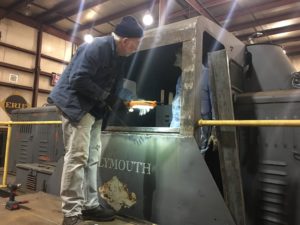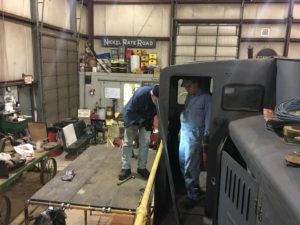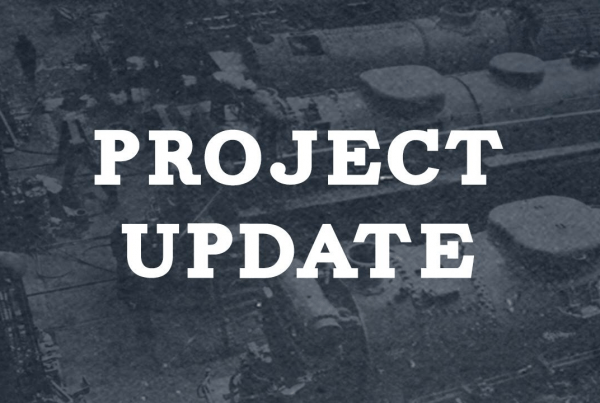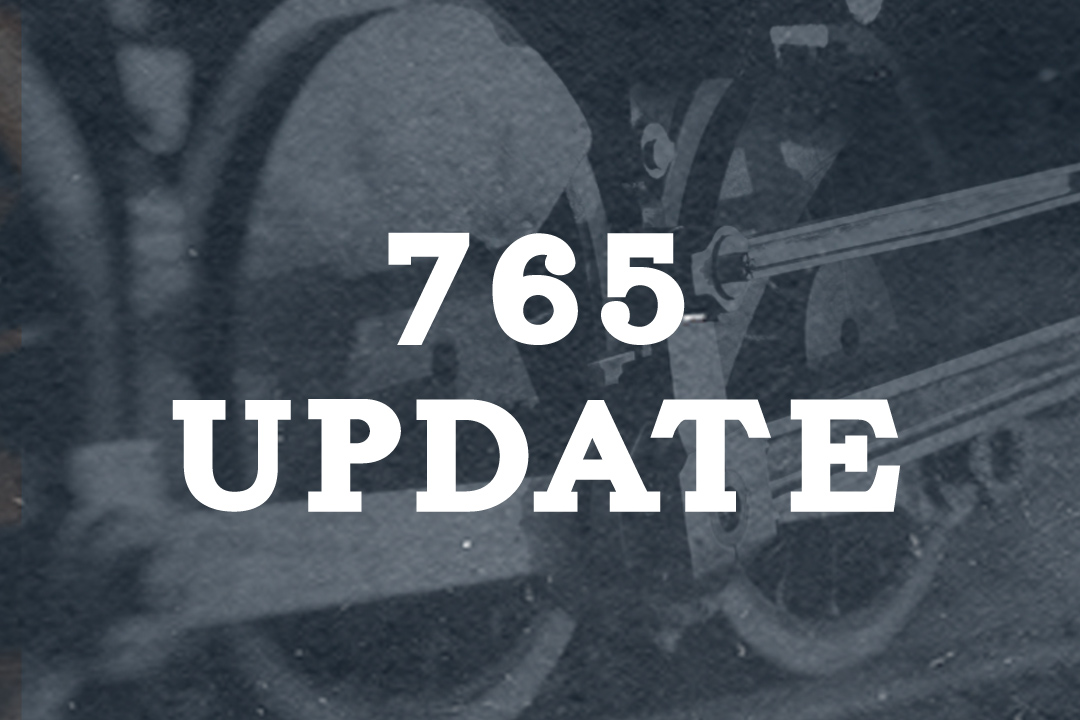Submitted by Tom Nitza
Plymouth
This weekend saw a lot of activity on the Plymouth. We removed the fireman’s side window and prepared the area for the installation of the new window. The locomotive does not have the original windows and frames. At some point someone retrofitted some plastic tracks and used glass panes without any frame or even handles to slide them. The other issue was that they were not designed to seal and there was a 1/4″ gap all around.
After a great deal of needle gun and wire wheel work, the area is primed.
Work will continue on Tuesday when John and I weld up some cracks and broken welds around the window area. At that point, we’ll be ready to install the new window track which should arrive this week.
To keep from getting bored, I decided to rework the air system piping leading from the reservoir into the cab. The intent is to install a dirt trap and cut off valve near the tank and then simplify the plumbing inside the cab. Over the years, various modifications had been made, and there was also an audible air leak. This project began by removing the sometimes stubborn piping and at times I resorted to a saws-all to get the job done. I’ve been working on a parts list so that I can begin putting things back together.
On Sunday we decided to tackle the operating mechanism for the rear
engine radiator shutters. The operating rod was frozen in place so we
tracked the problem down to one of the supports. A little heat managed
to get things working again. However, there was bad news. The rod was
moving fine but there’s a swivel joint underneath the shutter assembly
that had frozen in place and it subsequently broke when we started
moving things around. So, McMaster Carr has a replacement and we’ll
install that. There’s an access panel underneath the shutter assembly
and with that off the broken part is visible. Hopefully we’ll be able to
remove it without removing the entire shutter assembly.
The air gauge in the cab was removed as part of the repiping project. It
has a brass case but with 70 years of accumulated grime it looked black.
I’ve been using Brasso on it and it’s looking much better, but there’s a
lot more polishing to do. Complicating matters is that several times
when the cab interior was painted they managed to get paint on the gauge.
During all this work we’ve been uncovering various shades of paint on
the locomotive. At various times in its career it has been painted
yellow, orange, and at least one shade of green.
Helping with all of this were Rich Brinkley, Carl Lyvers, and John Jaress.
Work will resume on Tuesday when John and I finish the repair work on
the window opening. On Friday hopefully we can install the new window
track. Saturday is not a work day, but I’ll be there on Sunday and
hopefully I’ll be able to start putting in pipe




